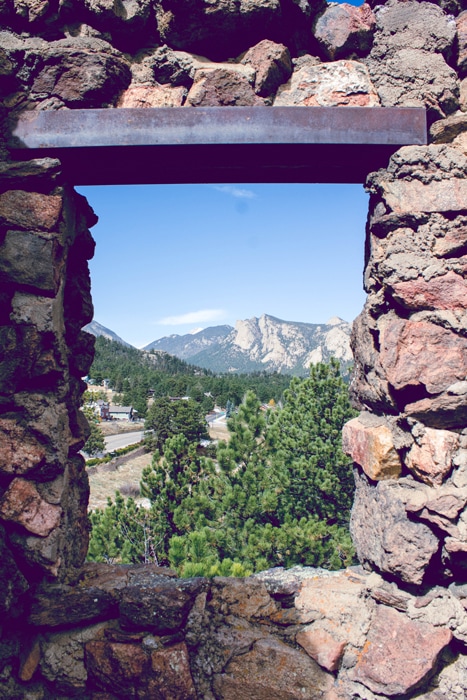Working from Home in the Digital Age
A cross country non-vacation filled with amazing scenery, a confined space, and spotty WiFi.
Sure, Lewis and Clark had journals and maps, but we had mobile phones and Wi-Fi (at least most of the time!) I recently took a trip across the country, without putting in for vacation time or assigning my tasks to someone else. I got it all done, and enjoyed the scenery, culture and adventure as we traveled state-to-state.
Thanks to technology, it’s becoming increasingly common to know someone who is currently working from home. It used to be a rare perk to be able to work from home, but it is rapidly becoming the norm for many industries. With a 115% increase in telecommuting work between 2005 and 2015, you could be next!
It used to be a rare perk to be able to work from home, but it is rapidly becoming the norm for many industries. With a 115% increase in telecommuting work between 2005 and 2015, you could be next!
Working from home is great, but sometimes I get the itch for travel and adventure, as do many professionals and entrepreneurs in every field. So, if you’re able to work from home, you should technically be able to work from anywhere, right? I decided to test this theory once and for all. I traveled across the country in a van, while continuing to work on projects for SMILE media, just to see if this lifestyle is manageable long-term.
How Did it Go?
Here are a few surprising statistics about working from “home”, combined with my experience working from “home”, when home is a van.
1. Remote work increases worker productivity and efficiency.
Though many employers believe there are more distractions at home than work, many studies actually disprove that myth.  Coworkers that walk by, chat over the cubicle, eat crunchy lunches and more provide plenty of distractions for employees. It’s much more distracting than a typically quiet home environment.
Coworkers that walk by, chat over the cubicle, eat crunchy lunches and more provide plenty of distractions for employees. It’s much more distracting than a typically quiet home environment.
 How does travel affect this statistic? We gathered only the essentials; 4-5 pairs of pants, 6-10 shirts, shoes, toiletries and of course our gadgets. Then we embarked on our month-long journey from New Hampshire to California, and back. We found that productivity did not change between New Hampshire and Ohio. Both myself and my boyfriend could work from the bed in the back of the van while the other drove. I was able to respond to e-mails, create videos and infographics, read up on Google AdWords certification processes and learn more about C++, while simultaneously passing over state lines.
How does travel affect this statistic? We gathered only the essentials; 4-5 pairs of pants, 6-10 shirts, shoes, toiletries and of course our gadgets. Then we embarked on our month-long journey from New Hampshire to California, and back. We found that productivity did not change between New Hampshire and Ohio. Both myself and my boyfriend could work from the bed in the back of the van while the other drove. I was able to respond to e-mails, create videos and infographics, read up on Google AdWords certification processes and learn more about C++, while simultaneously passing over state lines.
However, we did have many connection issues between Indiana and Denver, Colorado, and then again in Southern Utah. There’s a surprising disconnect in the middle of the country that even Verizon couldn’t get to at times. Though it was hindering without a consistent Wi-Fi signal, I found that I could still accomplish smaller projects on premiere pro and photoshop.
Though we didn’t get to work as much as we usually would during the week it took to get out there, we certainly loved the places we were able to visit along the way. Among our favorites were Walnut, Iowa (with its historic  antique downtown area); Estes Park, Colorado (a hidden town in the Rockies); and Zion National Park in Utah (canyons with a spiritual presence). Utah certainly has many hidden treasures, a local in ___, Utah told us of a cave just outside of Zion where you can carve into the soft rock. Naturally, Connor and I left a cute “Kirsten & Connor” message in the rock. I also may have quoted Rick and Morty eternally, as well…
antique downtown area); Estes Park, Colorado (a hidden town in the Rockies); and Zion National Park in Utah (canyons with a spiritual presence). Utah certainly has many hidden treasures, a local in ___, Utah told us of a cave just outside of Zion where you can carve into the soft rock. Naturally, Connor and I left a cute “Kirsten & Connor” message in the rock. I also may have quoted Rick and Morty eternally, as well…
2. Working remotely lowers stress and boosts morale.
 Stress levels across America are growing. Currently, 18% of the population is diagnosed with some sort of anxiety disorder (and that doesn’t include those who cannot afford health insurance.) Right now, 82% of people who work from home report lower stress levels, while 80% report higher morale. Altogether, it was reported that absenteeism decreased 69%. On top of this, a Forbes study showed large companies like Aetna save tens of millions per year on office spaces by going remote. Though it’s difficult to determine, it’s worth wondering: Would large companies going remote decrease stress and anxiety among their staff? Would they be able to hire more remote employees in the process of their savings?
Stress levels across America are growing. Currently, 18% of the population is diagnosed with some sort of anxiety disorder (and that doesn’t include those who cannot afford health insurance.) Right now, 82% of people who work from home report lower stress levels, while 80% report higher morale. Altogether, it was reported that absenteeism decreased 69%. On top of this, a Forbes study showed large companies like Aetna save tens of millions per year on office spaces by going remote. Though it’s difficult to determine, it’s worth wondering: Would large companies going remote decrease stress and anxiety among their staff? Would they be able to hire more remote employees in the process of their savings?
Bringing the van lifestyle into play, I definitely can say that there was stress figuring out when I’d get Wi-Fi next. I consistently had to come up with what work I could do that didn’t involve some sort of connection. When it comes to working at a Web Development agency, WiFi is definitely high on the list of necessities! If it weren’t for all of the beautiful and historic sites along the way, I’d say that I found working on the road to be just as stressful as working in an office. However, keep in mind that our timeline for going cross country and back was a bit in hyper-drive, and we often had 4 to 8 hour driving days.
3. A remote work environment reduces employee turnover, and increases employee engagement.
According to a study published by Stanford University, Job attrition rates fell by 50% when remote work options were offered by the employer. The report, based on NASDAQ, showed that ‘working from home’ operations proved to be highly profitable for the company. According to the Harvard Business Review, remote workers are often more engaged with colleagues and supervisors than in-office workers. Digital and social media tools certainly come into play, in fact a separate study found that 87% of remote workers feel more connected through video conferencing.
proved to be highly profitable for the company. According to the Harvard Business Review, remote workers are often more engaged with colleagues and supervisors than in-office workers. Digital and social media tools certainly come into play, in fact a separate study found that 87% of remote workers feel more connected through video conferencing.
 Van life or not, this is a driving point that really hits home for me. Working with SMILE media is a blessing, because the option to work remotely with them has allowed me to travel. If I worked in office, I believe I wouldn’t have the same friendly connection to my team members. The typical 9 to 5 can be a drag, as those hours are chosen for you whether it’s convenient to your needs or not.
Van life or not, this is a driving point that really hits home for me. Working with SMILE media is a blessing, because the option to work remotely with them has allowed me to travel. If I worked in office, I believe I wouldn’t have the same friendly connection to my team members. The typical 9 to 5 can be a drag, as those hours are chosen for you whether it’s convenient to your needs or not.
A timer allows me to track the hours I’ve worked, and I can choose to work in the morning, afternoon or evening. I can break the hours up during the day as I please based on any errands I need to do or activities I’d like to do (such as snowboarding in the morning on a Tuesday while everyone else is working!) I find I work more weekends than not, but that does not bother me, because at that time most places are crowded.
It's certainly an easy to love lifestyle!
4. Working remotely is a growing global phenomenon.
Worldwide, more than 50% of part-time telecommuters say they want to increase their remote hours. Additionally, 79% of knowledge workers in a global survey say they work from home, and 60% said they’d leave their  current position for a full time remote position at the same rate if they could.
current position for a full time remote position at the same rate if they could.
Is it possible to work remotely and travel? Yes. Many studies have already concluded that people, especially millennials, even work while on their vacation days. 3 out of 5 people of all ages find themselves working while on vacation, while 35% of millennials work each day of their vacation. They also find they’re less productive when they get back to their office when their vacation is over, because there are just too many distractions! Whether you’re on a Hawaiian Beach or Skiing in the Rockies, you likely check your emails and updates for an hour on your laptop, phone or other business device.
If people find themselves to be more productive, less stressed and more connected working on vacation, maybe it’s time to push your business forward into the digital age. If your industry is one in which there are viable ways to work from home, it’s certainly worth a shot! You can always rent a satellite office to gain more clients.
Now for the big question - would I travel and work again? Absolutely, yes.
 Though the month-long trip had some setbacks (due to time, space and connectivity), it is still easy to see how one can travel and work. The biggest aspect I would change is swapping the van for at least a Class-B motorhome with a comfy king size bed and especially a kitchen, because I like to choose my meals (plus, I'm a pretty great cook!). There is certainly a lot of value in one’s personal space, a desk to work on and more. The van was a little shaky over 60mph which affected my concentration, and the fact that we took out the backseat seatbelt to opt-in for a full-time bed added some anxiety when traveling. Well, people always say, “no risk, no reward” though, and I’d have to say this trip was incredibly rewarding!
Though the month-long trip had some setbacks (due to time, space and connectivity), it is still easy to see how one can travel and work. The biggest aspect I would change is swapping the van for at least a Class-B motorhome with a comfy king size bed and especially a kitchen, because I like to choose my meals (plus, I'm a pretty great cook!). There is certainly a lot of value in one’s personal space, a desk to work on and more. The van was a little shaky over 60mph which affected my concentration, and the fact that we took out the backseat seatbelt to opt-in for a full-time bed added some anxiety when traveling. Well, people always say, “no risk, no reward” though, and I’d have to say this trip was incredibly rewarding!
Another aspect that I’d change would be not to have a time constraint to be home. We only had 1 month to see as much as we could. If we had at least 3 months, drove maybe 1-3 hours per day, and stopped near cities with plenty of WiFi service, this definitely would have been everything I’ve ever dreamed of.
Traveling the country has certainly changed my views of America. There are so many interesting people, places, and cultures that I had never experienced before. America is truly a beautiful and diverse place, and I hope that anyone who dreams of traveling the country (young or not!) finds a way to do it. Evolving work force trends may just make it possible sooner than you think!









